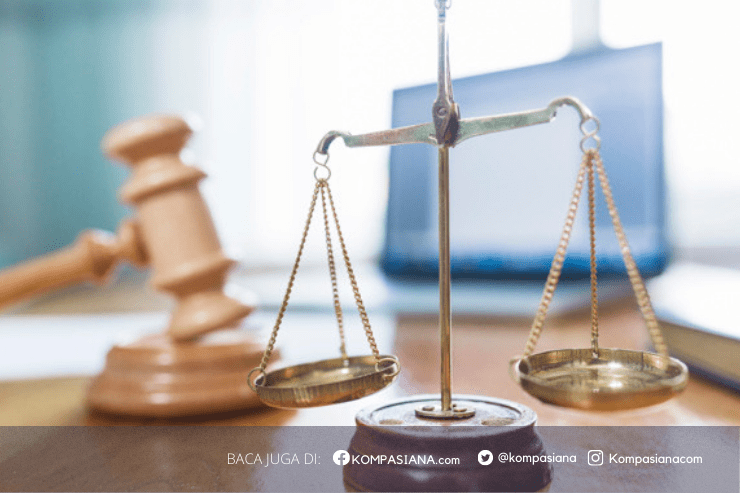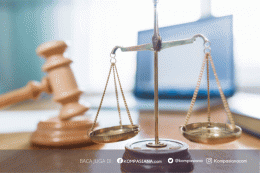KOMPAS TV Exposes Lies of Roy Suryo and Rismon Sianipar; Tifa Seeks UN Assistance
The interplay between media outlets, political figures, and public perception constitutes a complex arena, especially when accusations of misinformation arise (Febriana et al., 2020). Recent events involving Roy Suryo and Rismon Sianipar, brought to light by KOMPAS TV, exemplify this dynamic, further complicated by Tifa's call for UN intervention, highlighting the serious ramifications of perceived falsehoods in the public sphere. The media landscape plays a crucial role in shaping public opinion, influencing social processes, and disseminating ideologies (Isroqunnajah & Thoyib, 2022; Lestaluhu & Jaali, 2023). Media outlets can frame news through specific language, imagery, and emphasis, potentially swaying audience interpretation (Tambunan & Simon, 2022). The mass media's ability to transmit information can significantly alter public opinion, making it a potent tool in shaping perceptions and influencing political outcomes (Afandi et al., 2022). Politicians now utilize media as campaign tools to convey persuasive messages, recognizing the media's integral role in people's lives and ease of access to information, including details about potential leaders (Juliani et al., 2020). Media outlets, in their role as watchdogs, also have a responsibility to critique government actions and regulations for the benefit of the public, further cementing their place in the political discourse (Prastowo & Hidayat, 2022). The quest for high ratings can incentivize television media to prioritize audience capture over delivering factual, dignified, and valuable information, potentially compromising their educational role.
The digital age has ushered in a new era of political mobilization, yet it grapples with challenges such as the dissemination of false information, hate speech, and behaviors undermining democratic principles (Ylmaz et al., 2024). The spread of hoax information and hate speech has become rampant online, with various issues exploited to create unrest, conflict, and division through false and provocative information (Florina, 2019). Low media literacy rates compound the problem, leading to the rapid and widespread dissemination of misinformation and hate speech (Lestari et al., 2024). This proliferation of fake news is exacerbated by the speed at which information travels across social media platforms, making it challenging for the public to discern credible sources from fabricated ones (Lazer et al., 2017). Political rivalry often fuels the spread of hatred and manipulation of religious and racial sentiments, underscoring the diverse ways in which fake news can manifest across various fields of interest (Pradekso et al., 2018). The vulnerabilities of mainstream media, including the push for immediate coverage and reliance on social networks, make them susceptible to manipulation (Caled & Silva, 2021). Social media's decentralized nature, coupled with a lack of transparency, provides malicious actors with unprecedented opportunities to influence democratic political processes (Wilder & Vorobeychik, 2017). The rise of social media has revolutionized political activism, especially among younger demographics, enabling spontaneous discussions, online mobilization, and direct communication with political figures (Asimakopoulos et al., 2025).
The call for UN assistance by Tifa introduces an international dimension to the controversy, raising questions about the extent to which international bodies should intervene in matters of domestic misinformation. Digital networks are integral to daily life, influencing public opinion and potentially fostering control by altering thinking patterns (Picarella, 2024). The flow of digital information can bypass traditional media gatekeepers, allowing information to spread quickly and widely, making it difficult to control narratives or address misinformation effectively (Caled & Silva, 2021). The rapid dissemination of unverified information through these channels has the potential to incite political polarization and social unrest (Khan et al., 2021). This phenomenon is exacerbated by the fact that false information can spread faster and more broadly on social media platforms, particularly when it is emotionally charged or sensationalized (Yu et al., 2024). The rise of social media as a primary source of news has created a new ecosystem for the spread of misinformation (Pennycook & Rand, 2019). The challenge lies in limiting the negative impact of false information through early detection and control of its extensive spread (Khan et al., 2021).
The implications of this situation extend beyond individual reputations, touching upon the broader issues of media ethics, political accountability, and the role of social media in shaping public discourse. The use of social media is considered a form of cyberbullying, cyber harassment, and cyber stalking, highlighting the potential for online platforms to be misused for malicious purposes (Mugahed Al-Rahmi et al., 2019). Cyberbullying, facilitated by the anonymity and reach of social media, presents a significant hazard, particularly among students (Mugahed Al-Rahmi et al., 2019). The anonymity afforded by online platforms can embolden individuals to engage in bullying behaviors they might avoid in face-to-face interactions. This can lead to mental and behavioral health issues, even increasing the risk of suicide among victims (Kawshar Jahan Fakir, 2023). The borderless nature of cyberspace allows cyberbullying to occur anytime and anywhere, making it difficult to escape (Kawshar Jahan Fakir, 2023). Social media platforms have taken steps to mitigate cyber harassment, yet the issue remains pervasive, demanding continuous attention and innovative solutions (Mugahed Al-Rahmi et al., 2019).
The anonymity afforded by online platforms can embolden individuals to engage in bullying behaviors they might avoid in face-to-face interactions (Mugahed Al-Rahmi et al., 2019). This incident underscores the need for increased media literacy, critical thinking, and responsible online behavior to mitigate the spread of misinformation and promote a more informed and engaged citizenry (Guo et al., 2019). The potential of social media to influence decision-making and amplify misinformation, conspiracy theories, and violence is concerning (Kanchan & Gaidhane, 2023). Social media algorithms and personalized media feeds contribute to the creation of filter bubbles and confirmation biases ("Social Media and Society," 2023). This echo chamber effect can reinforce existing beliefs, regardless of their veracity, and further polarize opinions (Wani et al., 2024). Efforts to combat misinformation require a multi-faceted approach, including media literacy education, fact-checking initiatives, and platform accountability (Kawshar Jahan Fakir, 2023; Lazer et al., 2017; Madan, 2022). The lack of effective content verification systems raises concerns, especially when younger users are exposed to cyberbullying, harassment, or hate speech, increasing the risk of depression and suicide (Ferrara, 2015; Hendricks et al., 2020). Given that anxiety is a major factor in cyberbullying, students experiencing depression or anxiety may turn to cyberbully behavior if they feel unable to share their feelings (Kawshar Jahan Fakir, 2023).
Cyberbullying often involves elements of racism, sexism, and homophobia, reflecting broader societal biases that manifest in online interactions (Alturif & Al-Sanad, 2023). Cyberbullying is characterized by repetition, an imbalance of power, and an intention to cause harm, mirroring traditional bullying dynamics (Polanin et al., 2021). Cyberbullying can take various forms, including sending threatening messages, exclusion from online groups, and spreading rumors. Cyberbullying is an intentional and repeated aggressive behavior perpetuated through digital means, causing harm to the victim (SchultzeKrumbholz et al., 2022). The ability to remain anonymous is a significant factor, as cyberbullies may not own their actions because of it (Rashid, 2022). The prevalence of cyberbullying is a global concern, with studies indicating that a notable percentage of students experience it (Kusumawaty et al., 2021). The potential for harm is substantial, given that a significant percentage of young individuals have access to the internet and actively engage on social media platforms (Pingault & Schoeler, 2017). This widespread use of technology, while offering numerous benefits, also exposes young people to potential risks, including cyberbullying.
References
Afandi, S. A., Erdayani, R., Afandi, M., & Afandi, N. H. (2022). Pekanbaru Mayoral Election 2024: Critical Discourse Analysis Review. Jurnal Politikom Indonesiana, 7(2), 29. https://doi.org/10.35706/jpi.v7i2.7574
Alturif, G., & Al-Sanad, H. A. R. (2023). The repercussions of digital bullying on social media users. Frontiers in Psychology, 14. https://doi.org/10.3389/fpsyg.2023.1280757
Asimakopoulos, G., Antonopoulou, H., Giotopoulos, K. C., & Halkiopoulos, C. (2025). Impact of Information and Communication Technologies on Democratic Processes and Citizen Participation. Societies, 15(2), 40. https://doi.org/10.3390/soc15020040







